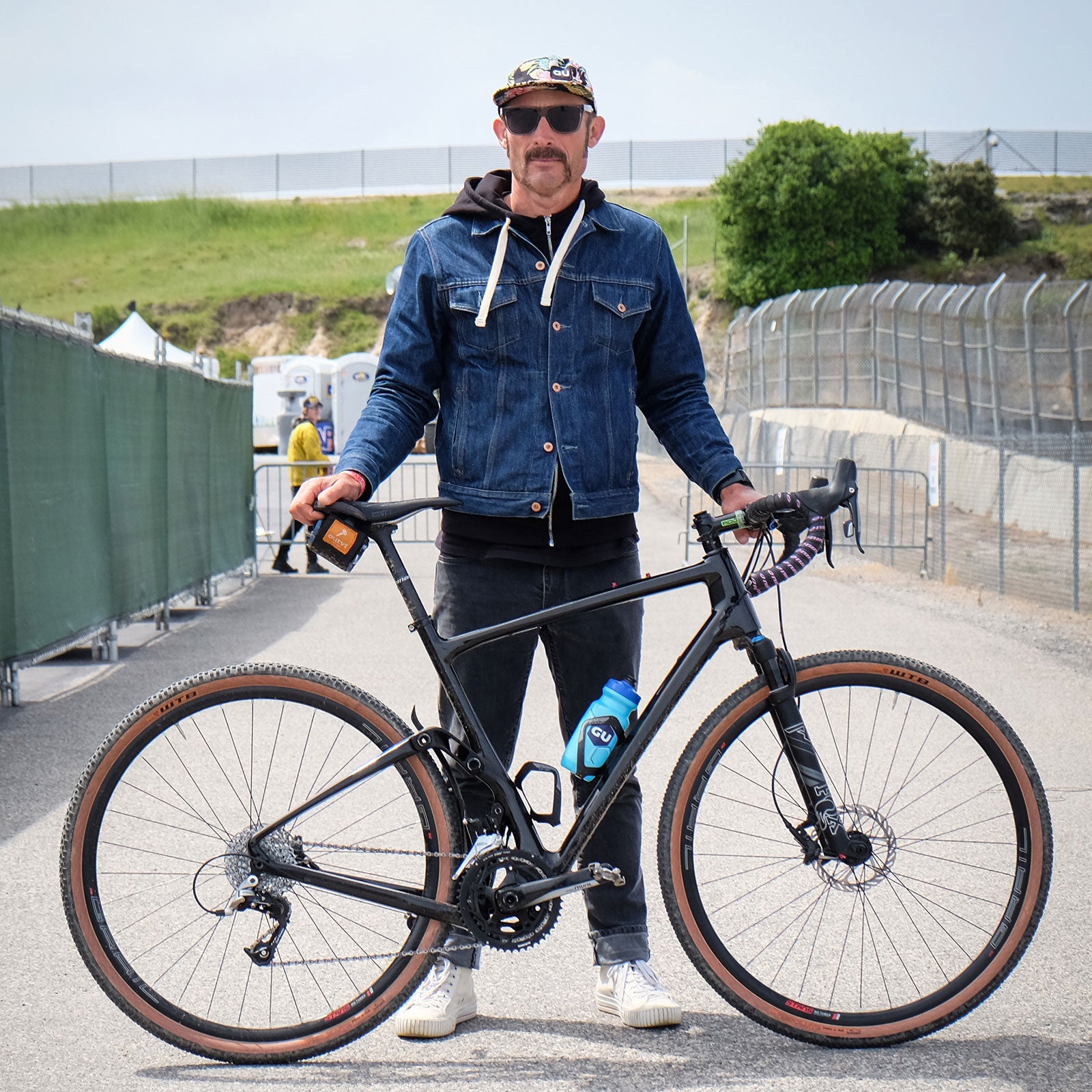The , which started in 1991 as a mountain-bike race, has morphed into a full-on exhibition. ThereÔÇÖs still the competition, of course, but now every April as professional and amateur racers jockey for position on the hills overlooking CaliforniaÔÇÖs Laguna Seca Raceway, cycling brands are also showcasing┬átheir latest bikes, components, and accessories.
Here are seven products that caught our eye at this yearÔÇÖs show.
Yeti Cycles SB130 Lunch Ride Edition ($7,599)
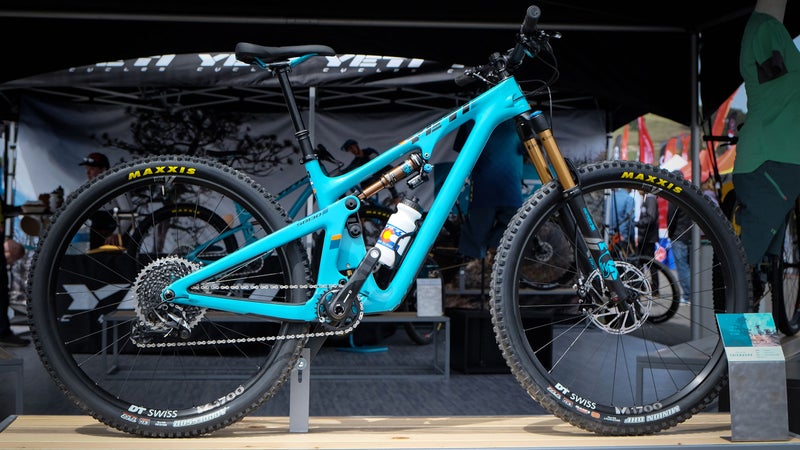
If you call Yeti during your lunch break, chances are all youÔÇÖll go to voice mail. The company has a long history of hitting the pause button on the workday so employees can indulge in a rip around the rocky trails outside its headquarters in Golden, Colorado. And staffers often modify their bikes with wider tires and longer-travel forks than are found on many production rigs. So the brand┬ámade some tweaksÔÇönamely deeper suspension and more powerful brakes for rowdier ridingÔÇöto the for the brand new Lunch Ride version.
The SB130 is YetiÔÇÖs jack-of-all-trades trail bike, an efficient climber thatÔÇÖs still confident on the descent. And for this iteration, the designers removed the spacer from the Fox DPX2 shock (standard on the SB130) to boost rear travel from 130 millimeters to 136. Up front, the Lunch Ride features a 160-millimeter Fox 36 fork in place of the standard 150-millimeter model. This allowed Yeti to kick the already slack head angle to 65 degrees, improving handling at high speeds.
Accompanying the increase in suspension are a pair of more powerful SRAM Code RSC disc brakes, rather than the usual SRAM Guide RSC brakes on many SB130 builds.
Moots Mountaineer YBB ($3,599)
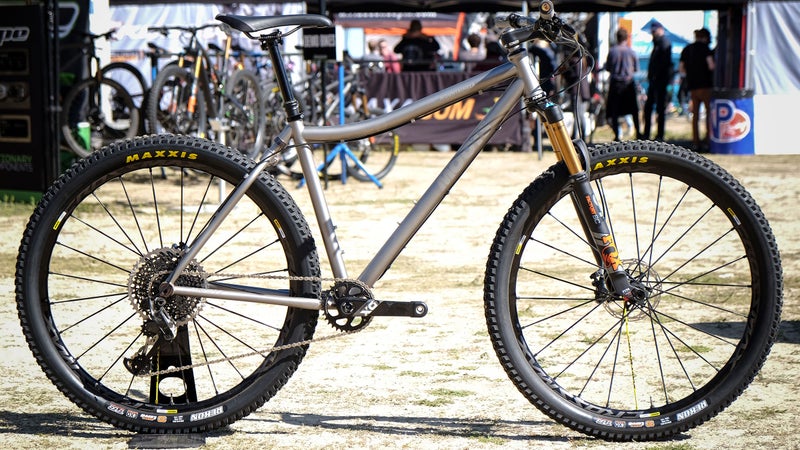
Many companies exhibiting mountain bikes at Sea Otter showed their rigs with a combination of 2.6-inch tires mounted on 29-inch wheels instead of the 27.5+ that was more popular a few years ago. The reason: these larger diameter rims maintain rolling momentum better than 27.5-inch hoops, while the 2.6-inch tires give up a modicum of traction for more agile handling than 2.8- and 3-inch-wide treads.
is one such bike to make the transition. This titanium beauty is still designed around a 120-millimeter suspension fork and features the brandÔÇÖs trademark YBB soft-tail rear end. This shockless suspension system uses vertical chain stay flex to deliver 30 millimeters of rear giveÔÇöjust enough to improve traction and take the edge off smaller obstacles. The move to mid-width 29er tires should make it a more nimble trail bike without compromising the MountaineerÔÇÖs bikepacking DNA.
Niner MCR 9 RDO (Price TBD)
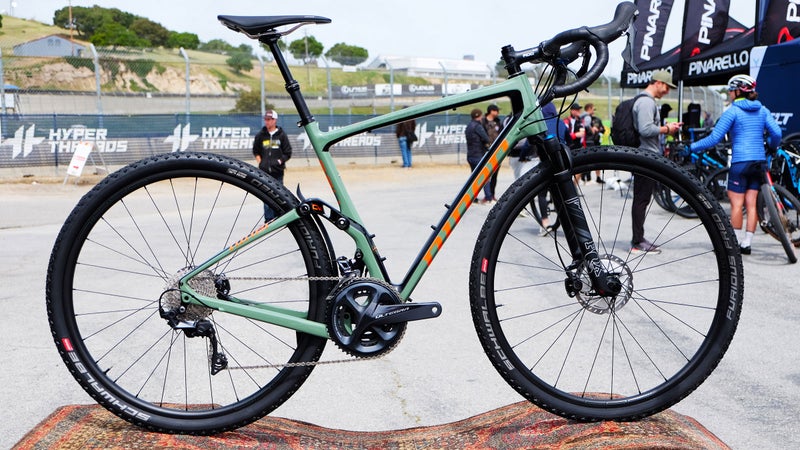
One of the few growing segments in the market is gravel bikes. These drop bar steedsÔÇöonce a Midwestern nicheÔÇöequipped with knobby, high-volume tires are quickly becoming the go-to choice for cyclists seeking solitude (and minimal interaction with vehicles) on lonely backroads.┬á
They evolved from cyclocross bikes. And as the genre develops, engineered frame flex and suspension systems are making their way onto more and more gravel rigs. Some manufacturers have introduced suspension forks and stems, but there was no such thing as a full suspension gravel bike until now.
Niner is in the late stages of developing the first one: the . The bike has a downsized version of NinerÔÇÖs efficient CVA linkage to deliver 50 millimeters of rear suspension. The prototype on display was equipped with a Fox AX fork with 40 millimeters of travel.┬á
According to Niner, weight and pricing will be in line with the companyÔÇÖs cross-country full-suspension model, the RKT 9 RDO. This will make it a few pounds heavier and approximately a thousand dollars more expensive than comparable rigid gravel bikes.
Is full suspension worth the increase in price and weight for gravel racing? Speaking from experience, there were plenty of times during the 200-mile Dirty Kanza where I would have traded a few pounds of bike for more comfort. 
Niner expects to bring the MCR 9 RDO to market in the last quarter of 2019.
Revel Rail ($2,599)
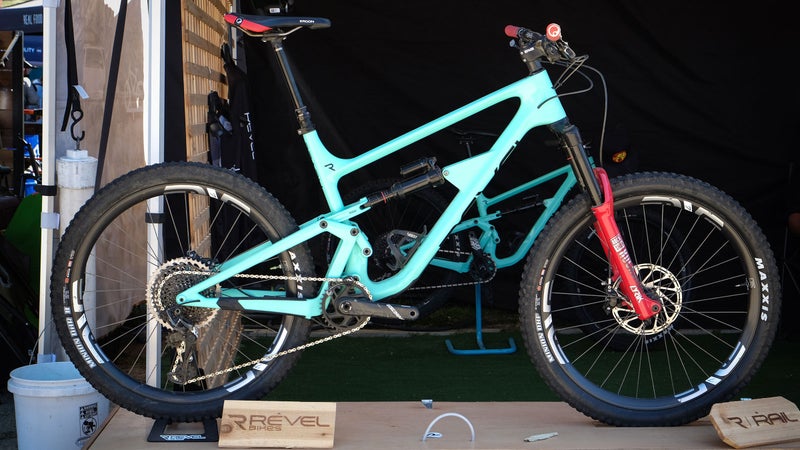
New mountain bikes come out each season and new companies arise every few years, but new brands with new suspension designs? Rarities.  
Revel Bikes is one of them, making its debut earlier this year with the 29er Rascal trail bike and the 27.5-wheeled Rail enduro rig. Both of these full-suspension carbon models use the Canfield Balance Formula suspension. (Small-batch builder Canfield has been around, but will likely be new to most mountain bikers.) This rear linkage has been praised by riders for its performance while pedaling and abundant traction while descending, even under hard braking.
In addition to the CBF, has many features in common with the latest crop of capable enduro bikes: 165 millimeters of rear travel, a 170-millimeter fork, and long, slack geometry that favors high-speed handling. We havenÔÇÖt gotten to ride it yet, but┬áif the CBF system lives up to the hype, we have high hopes.
Trust Performance Message Linkage Fork ($2,700)
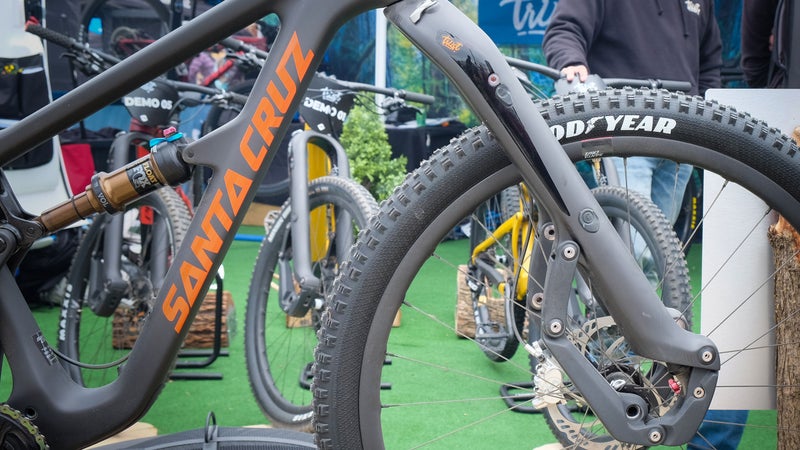
The 130-millimeter Performance Message fork looks revolutionary, with its oversize┬áchassis and futuristic design. And what makes it different from its predecessors and traditional telescopic suspension forks is its ability to maintain consistent mechanical trail. (Mechanical trail refers to the perpendicular distance between the virtual line of the steering axis and the front wheelÔÇÖs point of contact with the ground.)
If youÔÇÖve ever noticed how steering becomes twitchy when your fork is at the end of its travel, then youÔÇÖve experienced how a sudden change in mechanical trail can affect handling. As a fork compresses, the mechanical trail can shorten, making for jerkier steering as you turn the handlebars. Keeping it consistent as the suspension moves through its travel, as Trust says this fork does, means predictable handling in all situations.
Now if only Trust can expand its product line with longer and shorter-travel versions and reduce the wallet-searing price tag.
Rotor 13-Speed Hydraulic Drivetrain ($2,800)
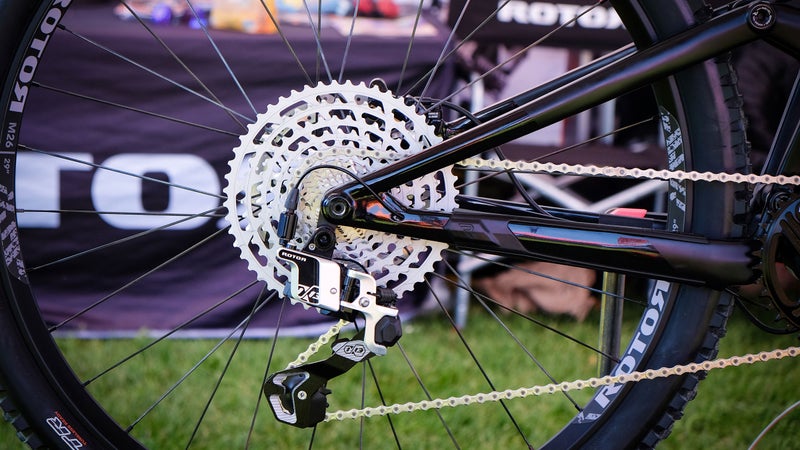
Every few years, drivetrain manufacturers add cogs to their cassettes to increase range and minimize the jumps between gears. SRAM has had 12-speed groups in its arsenal for several years. Shimano lagged behind until the launch of the latest generation of XTR last summer. And just when it looked like the war had reached a stalemate, Rotor launched a salvo with the worldÔÇÖs first .
This 1×13 drivetrain is designed for greater range and versatility. Rotor positions it as a modular system that can be configured for mountain, gravel, cyclocross and even road. Users can swap cassettes, chainrings, and, in the case of dropbars, the brake and shift levers, all while using the same derailleur. Not satisfied with out-gearing the competition, Rotor opted to go a different route by using simple, reliable hydraulics to actuate the derailleur.┬á┬á
The Spanish manufacturer appears to be working smarter, not harder, in taking on SRAM and ShimanoÔÇÖs drivetrain hegemony. Time will tell if the big guns follow suit with their own 13-speed versions.
CushCore Gravel.CX Tire Inserts ($149)
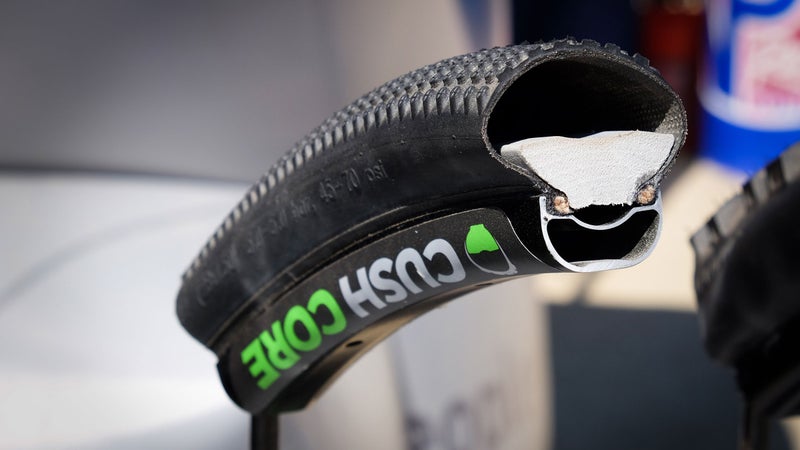
For the uninitiated, a tire insert is closed-cell foam that wraps around the rim, protecting tires from pinch flats and preventing rim damage from rocks and sudden impacts.  
In a few short years, theyÔÇÖve become one of the most popular upgrades for aggressive trail riding. and similar tire protection systems are now a necessity for top-level enduro and downhill racing.
At Sea Otter, the company was showing off a new version designed for gravel and cyclocross. The company claims that, in addition to providing the usual protection against pinch-flats and rim damage, its foam inserts diminish high-speed vibration through the bike. This reduces rider fatigue, which could be a blessing for gravel riders on choppy fire roads.


